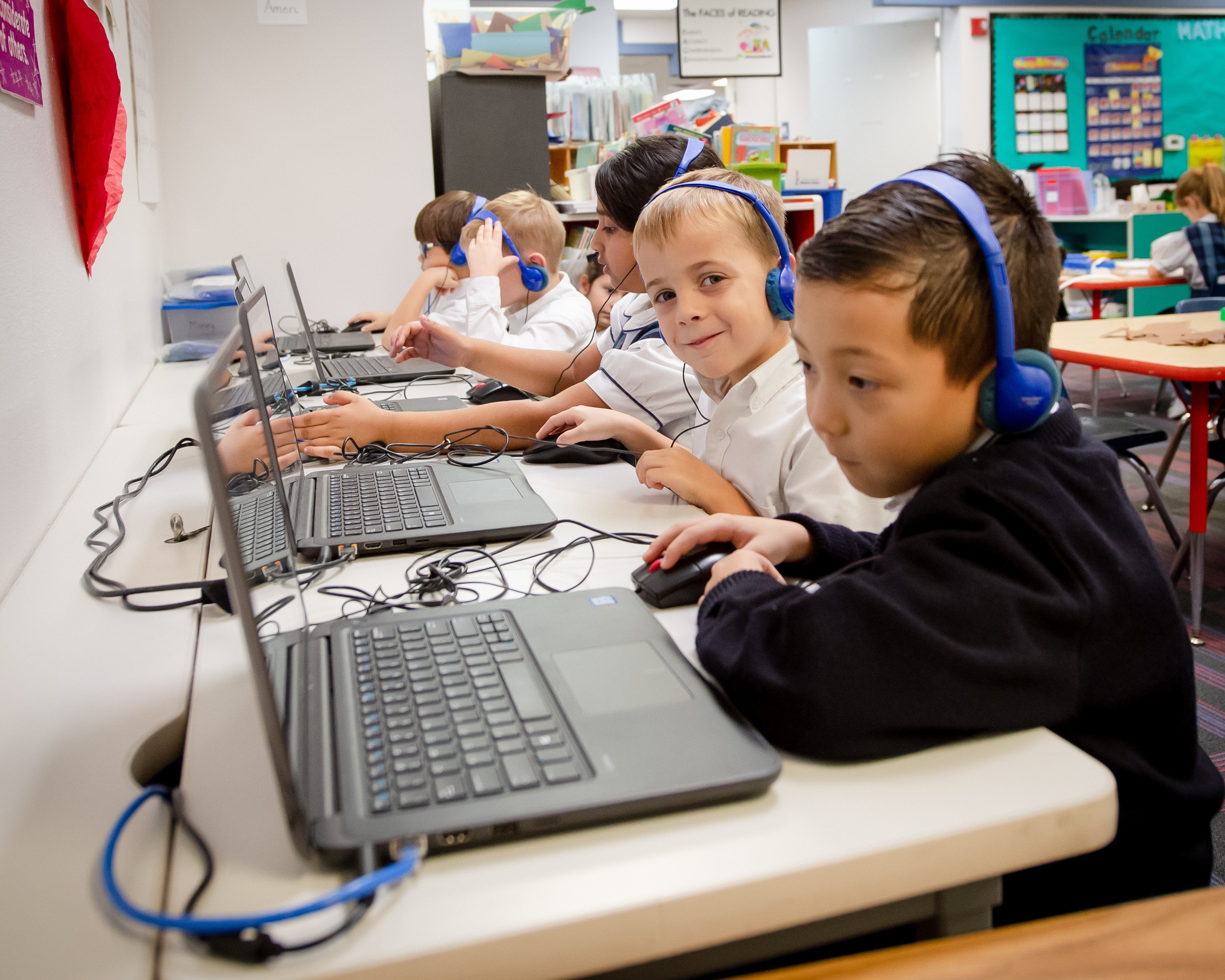Technology
Philosophy
Holy Family Catholic School teaches students to use technology as a tool for acquiring and sharing knowledge. Classroom instruction may be enriched by the integration of technology to support learning in content areas. Technology programs provide opportunities for individual pacing and sequencing of learning, collaboration with peers, and illustrations and interactive simulations that help students have a deeper understanding of concepts. In addition to computer-assisted instruction, students from first through sixth grade attend the computer lab to receive training in technology applications. This instruction prepares students to use the computer for personal productivity, which will be used throughout middle school and into high school and beyond.
Technology Curriculum
The Technology Applications curriculum used by most accredited schools in Texas serves as the foundation for all instruction in technology from first through sixth grade at Holy Family. While the curriculum objectives change considerably through the years, the curriculum follows six strands based on the National Educational Technology Standards for Students (NETS•S) and performance indicators developed by the International Society for Technology in Education (ISTE): creativity and innovation; communication and collaboration; research and information fluency; critical thinking, problem-solving, and decision making; digital citizenship; and technology operations and concepts.
Through the study of the six strands in technology applications, students use creative thinking and innovative processes to construct knowledge and develop products. Students communicate and collaborate to reinforce and promote learning. Research and information fluency includes the acquisition and evaluation of digital content. Students develop critical thinking, problem-solving, and decision-making skills by collecting, analyzing, and reporting digital information. Students practice digital citizenship by behaving responsibly while using technology tools and resources. Through the study of technology operations and concepts, students learn technology-related terms, concepts, and how computers work.
Technology Resources

Internet Access
Our campus has internet access provided through a high-speed fiber internet connection with Meraki access points throughout the campus. A Cisco network appliance is installed on our network that provides a firewall and content filtering compliant with the *Children's Internet Protection Act (CIPA). It offers internet security for our students and protects our network. In addition, YouTube is restricted throughout the campus and can only be accessed through a student's Google account, which has a strict YouTube policy in place. Students will be taught responsible use of the internet, implemented through systematic teaching and scrupulous supervision. Internet access will be granted over time, as students' level of responsibility and maturity allow.
CIPA is a federal law enacted by Congress in 2000 to protect children using school, college, and library computers from offensive internet content. Our filter meets or exceeds the requirements of CIPA and helps to protect our network. The school's Technology and Internet Acceptable Use Policy meets and exceeds all requirements of CIPA. All parents will be asked to sign that they agree to uphold the acceptable use policy for technology, in school-related activities and away from school. Students in second grade and above will be asked to sign it as well.
